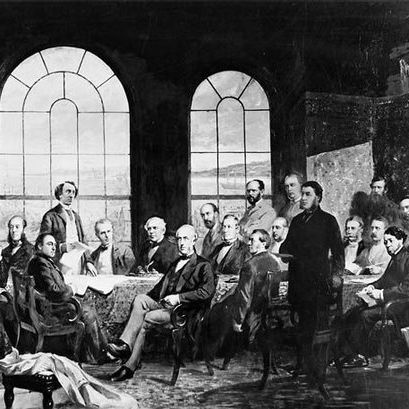It is #IndigenousHistoryMonth and this is the story of Keish, the man who started the Klondike Gold Rush
Keish was born around 1855 near Bennett Lake, Yukon, His name Keish means wolf.
A member of the Tagish people, his father was Kaachgaawaa, a chief.
🧵1/6
Keish was born around 1855 near Bennett Lake, Yukon, His name Keish means wolf.
A member of the Tagish people, his father was Kaachgaawaa, a chief.
🧵1/6

In the mid-1880s, Keish was working as a packer, carrying supplies through the backcountry. It was doing this where he earned his nickname Skookum Jim, for his strength. The word means strong & reliable in Chinook jargon.
He soon began working with George Carmack.
🧵2/6
He soon began working with George Carmack.
🧵2/6

His sister, Kate (she will have her own thread in a few days), married George & the three began prospecting.
In mid-August 1896, they struck gold at Rabbit (Bonanza) Creek. While Carmack said he saw it first, witnesses say it was Keish who discovered gold.
🧵3/6
In mid-August 1896, they struck gold at Rabbit (Bonanza) Creek. While Carmack said he saw it first, witnesses say it was Keish who discovered gold.
🧵3/6

Carmack staked a double claim, and Keish staked his own claim. As they worked their claims, they pulled $1 million worth of gold out, starting the Klondike Gold Rush.
The sudden wealth changed everything. Keish built a large house where he lived during the winters.
🧵4/6
The sudden wealth changed everything. Keish built a large house where he lived during the winters.
🧵4/6

Known for his generosity, when Carmack abandoned his wife Kate & left her penniless, Keish built her a cabin.
He eventually created the Daisy Mason Trust so his fortune could be given to his daughter for her education and adult life.
🧵5/6
He eventually created the Daisy Mason Trust so his fortune could be given to his daughter for her education and adult life.
🧵5/6

Keish died on July 11, 1916 in Whitehorse after a long illness. He left money to several relatives to help them.
When his daughter died in 1938, as per Keish's instructions, the remaining money in the trust was used to help the Indigenous people of the Yukon.
🧵6/6
When his daughter died in 1938, as per Keish's instructions, the remaining money in the trust was used to help the Indigenous people of the Yukon.
🧵6/6

• • •
Missing some Tweet in this thread? You can try to
force a refresh





















